DriveHub in a nutshell
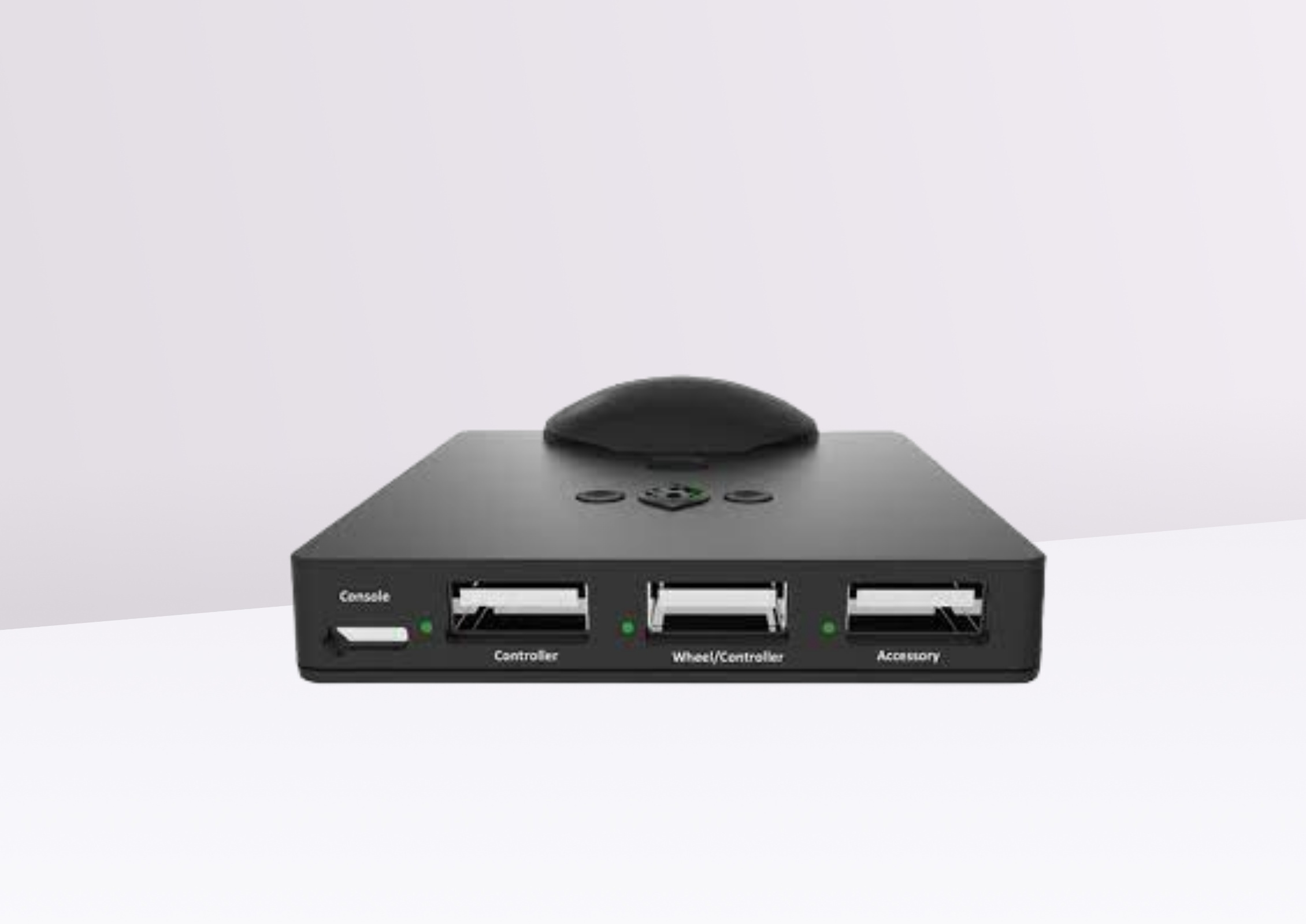
Advantages & Disadvantages
✅ Very good value
✅ Compatible with many brands and easy to use
❌ Not compatible with latest consoles
ㅤ
Since its beginnings, the world of sim-racing has been mainly dedicated to the PC platform, with many peripherals and products running perfectly on Microsoft systems. Although Mac and Linux OSes are beginning to gain ground in the PC segment, it’s much easier to develop a product for a Windows PC than it is for a Mac.
Returning to sim-racing, the same philosophy applies: it’s easier to develop a Windows-compatible peripheral for the PC than it is for Sony and Microsoft consoles. In reality, this favoritism for PC is not the result of chance or lucrative contracts between sim-racing peripheral manufacturers and the Redmond computer giant, but rather of requirements in terms of console compatibility.
You see, to release a product compatible with Xbox or Playstationperipheral companies, in this case sim-racing, must collaborate with Sony and Microsoft, and above all receive chips that enable said compatibility. As a result, many sim-racing manufacturers, such as Simucube, SimagicHeusinkveld, etc. prefer to release PC-only products to avoid all this hassle.
However, we do have a product that acts as an interpreter between PC-only sim-racing peripherals and making them functional on consoles. It’s called DriveHub, and we’ll be looking at it in more detail below.
What is DriveHub?
The DriveHub is a small box developed by a company called Collective Minds. The DriveHub’s role is to connect PC/console-compatible sim-racing peripherals such as bases, steering wheels, pedalboards, shifters, etc., to consoles and PCs.
DriveHub acts as an interface between the peripherals’ default platform and the one on which you want to play, in this case console or PC. The great thing about DriveHub is that it not only allows you to interface a PC peripheral with a console, but also to interface products between consoles themselves. Let me give you an example to help you understand this. Let’s take the CSL GT DD Pro from Fanatec , which is compatible with both PC and Playstation. With DriveHub, you’ll be able to use this same base on an Xbox, even if it’s not compatible with Microsoft’s default console.
To put it simply: think of DriveHub as an interpreter that’s there to enable the peripherals you have to make themselves understood with the platform you’re using.
In terms of design, this product is a small box with LEDs on top, buttons for configuration, USB sockets on the rear to plug in sim-racing peripherals and connect the DriveHub to whatever platform you have via a USB Micro-B cable. Of course, the magic is inside the DriveHub, and we’re going to take a closer look.
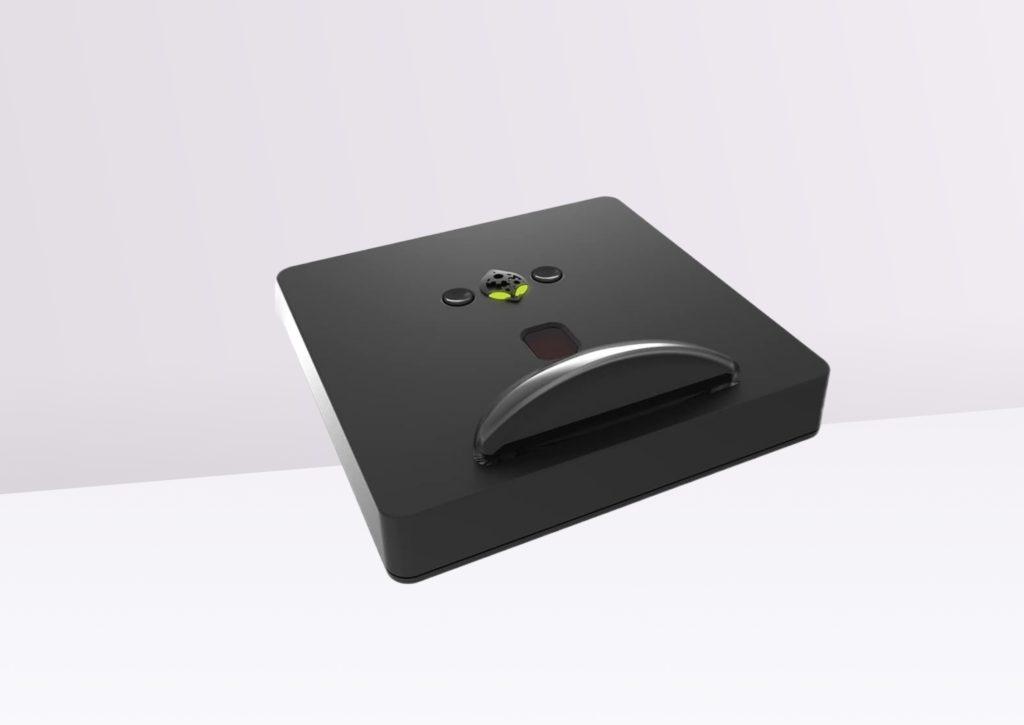
How does DriveHub work?
The DriveHub’s magic is in the form of a chip or controller that interfaces the peripherals you have with the platform to which the product is connected. To enable this interface, DriveHub uses a fairly exhaustive list of sim-racing peripherals available on the market, and as soon as you plug in your setup (base, steering wheel, pedalboard, etc.), the box will search for your peripherals in its list, detect the platform you’re using (Xbox One, PS4 and PC) and configure the controls so they can work.
The interface configuration is done automatically, and this is what enables the mapping of the commands (gas pedal, brake, steering, etc.) that you will send to DriveHub. There are also buttons for configuring your controls if you wish, but in most cases this is not necessary. This box is so well designed that it takes care of practically everything itself.
DriveHub compatibility with platforms and peripherals
Let’s move on to DriveHub’s compatibility with platforms, sim-racing peripherals and titles.
- Sim-racing titles. DriveHub supports virtually all current sim-racing titles, from Need For Speed to Gran Turismo to Forza Horizon. This list of title compatibility is long, but you won’t get the latest releases. Which brings us to the next point.
- Platforms. DriveHub is compatible with PS3, PS4, Xbox One and PC. Well, to be honest, it’s limited to Last Gen only on consoles, which is a bit of a hassle, especially if you want to play the latest sim-racing titles. For PC, however, you’ll be able to exploit DriveHub’s full potential without the slightest problem.
- Sim-racing peripherals. For peripherals, DriveHub supports a wide selection of products from Logitech, ThrustmasterFanatec and many others. Preferably, it’s best to use DriveHub with older sim-racing peripherals to avoid compatibility problems, especially with the latest releases from sim-racing players such as the ClubSport DD+ from Fanatec.
DriveHub value for money
The DriveHub is priced at around €130, which gives it very good value for money as far as I’m concerned. The case is very well made, assembled to perfection, with no glaring defects. Configuration and interfacing between sim-racing peripherals and the platform you’re on is automatic in virtually all cases. There’s no lag between the inputs on your setup and the transmission of information to the console or PC.
This product is simply excellent, especially for racers with a setup like Fanatec Porsche 911 Turbo S or ClubSport Wheel Base V2.5 and can’t afford to upgrade, or don’t want to. It has to be said that not all sim-racers keep up with the latest sim-racing peripherals, and many prefer to stick with their rigs, which work just fine. As a result, a product like DriveHub is just the thing to enable them to continue enjoying sim-racing, without breaking the bank. Don’t forget that a Fanatec CSL bundle goes for at least €400 today. So…
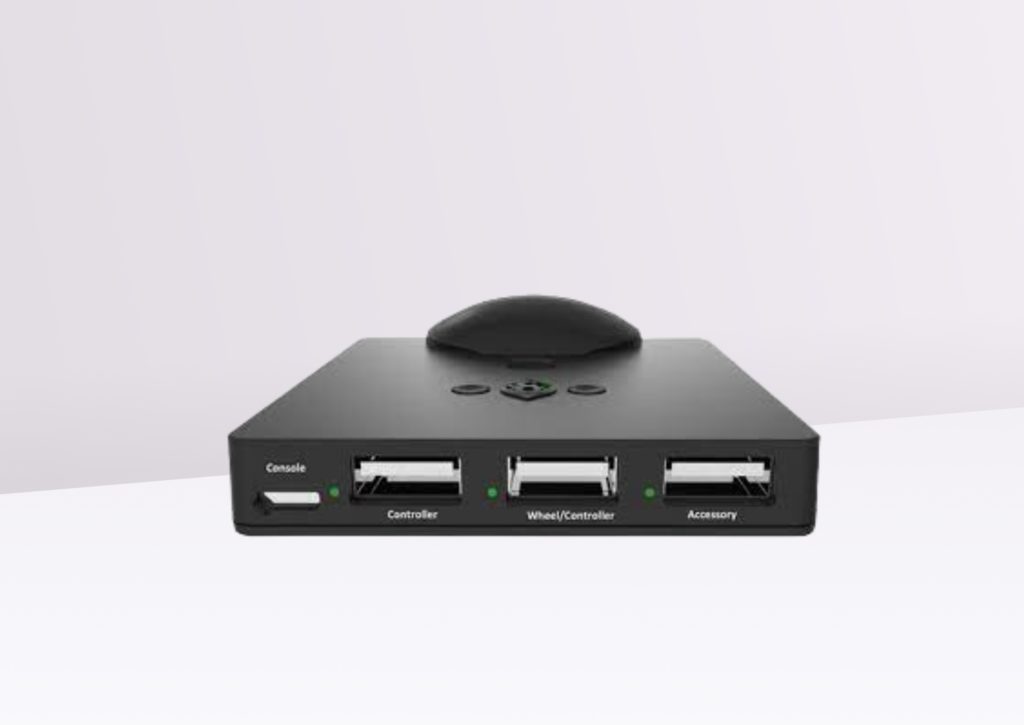
Which product is best suited to which type of sim-racer?
I’m not going to beat around the bush: DriveHub is perfect for runners who have a fairly old setup (like 10 years old) and aren’t looking to upgrade for various reasons. It could be for financial reasons, or they simply don’t see the point of having the latest products from Fanatec or Simagic, for example.
So, forking out some €130 for a hub that will run your sim-racing setup on different platforms such as Xbox One, PS4, PS3 or PC, isn’t such a bad investment or purchase to make. What’s more, you’ll have virtually no configuration to do to get the DriveHub to run your sim-racing peripherals.
Also, we have the case where a racer owns two different consoles, like an Xbox One and a PS4 for example, and the sim-racing peripherals we have available on the market today don’t allow for such compatibility, especially at the base level. So, if you like titles like Forza Motorsport and Gran Turismo, DriveHub will let you enjoy both games with the same sim-racing setup.
My verdict on DriveHub
So, my verdict on the DriveHub. On the whole, this product is very good, works superbly well, and requires virtually no intervention on your part. Its €130 price tag is affordable, especially if you’re not keen on upgrading your current setup, and this little box will keep you enjoying your sim-racing peripherals for a long time to come.
As far as I’m concerned, it’s still a good investment for those who have an old-generation sim-racing rig, like the Fanatec ClubSport Wheel Base V2.5 for example, and who are on 2 different consoles (Xbox and Playstation). Instead of having 2 setups, one for each platform, spending a small amount of money on a hub that will act as an interpreter is a good investment.
However, the picture isn’t perfect, and DriveHub has a few shortcomings, including support for Last Gen consoles. You won’t be able to use it on a PS5 or Xbox Series X, for example. It’s a bit of a shame, especially as we know that good rig sim-racing is generally designed to last a long time. But then, you can’t have everything in life.

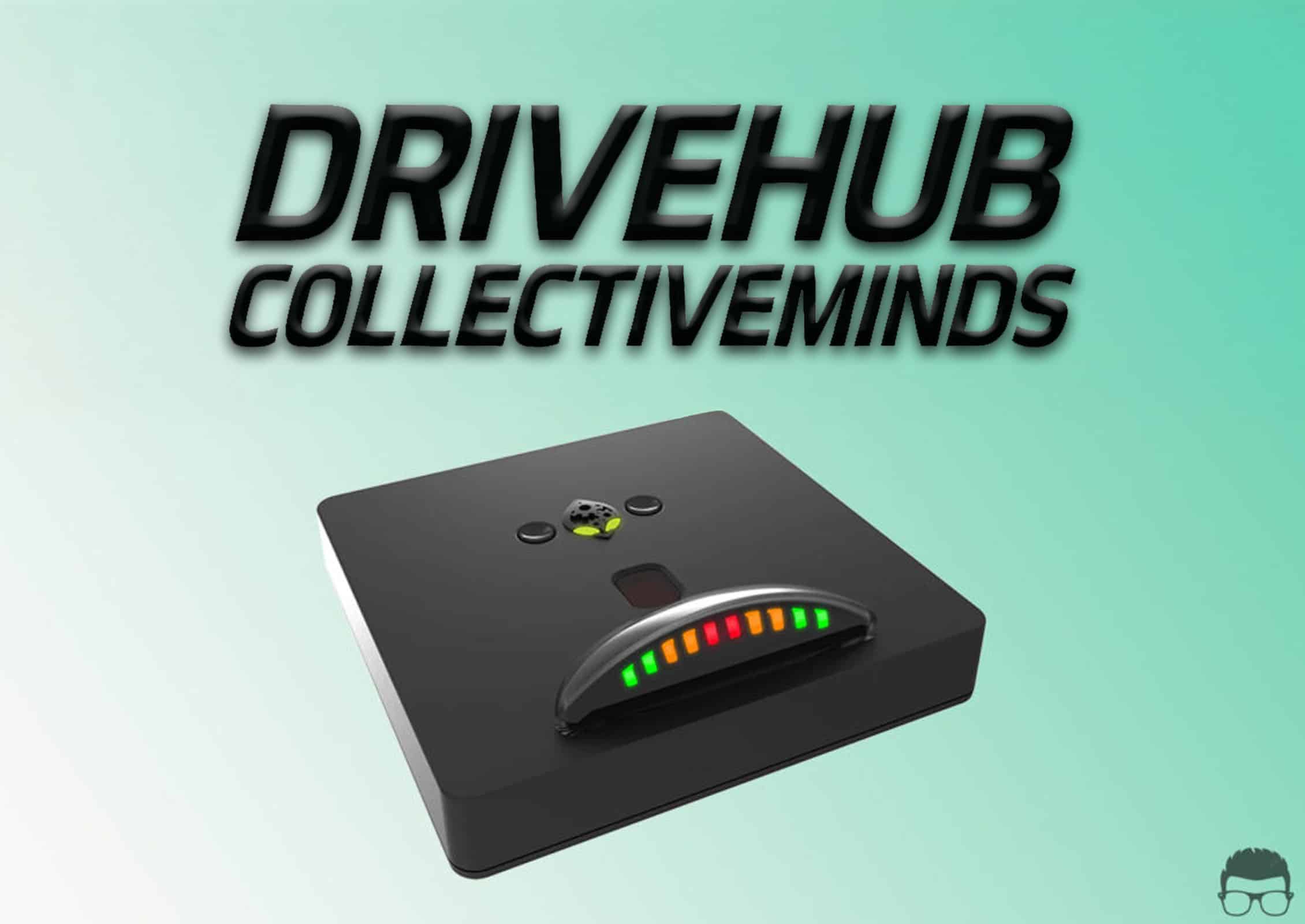


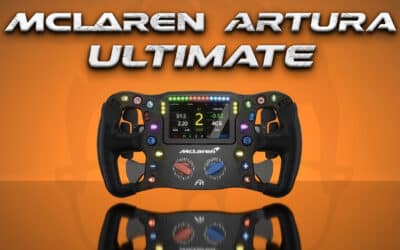

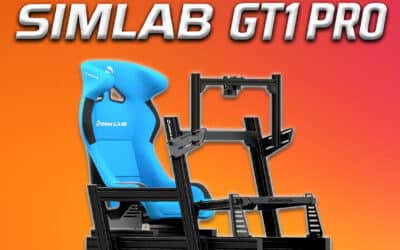
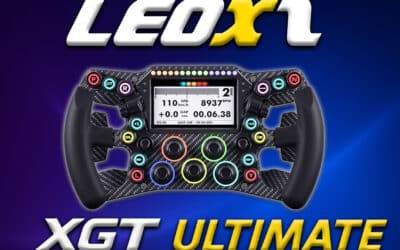
0 Comments